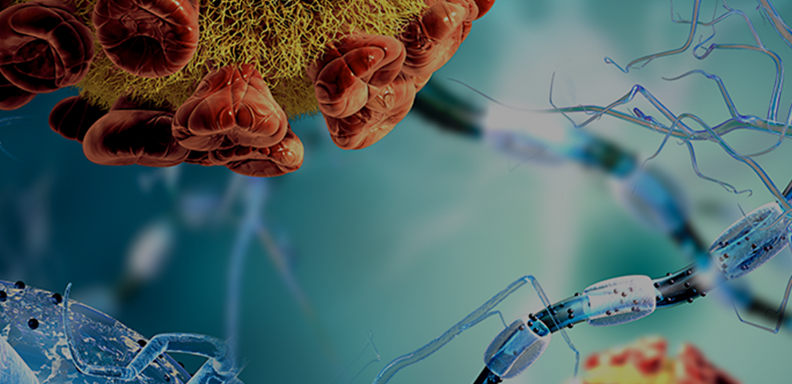Early detection of cancer leads to higher survival rates and reduced healthcare burden. Traditionally, doctors rely on biopsies from tumor and tissue samples to study tumor DNA. However, liquid biopsies—diagnostic methods that detect DNA of normal and tumor cells released into the blood or urine, called cell-free DNA (cfDNA)—have recently garnered attention because they are minimally invasive and less expensive compared to traditional biopsies.
A team of scientists from the University of Chicago and Northwestern University developed a new, more sensitive technique to detect different types of cancers accurately using a minimal amount of DNA collected from blood. This study was recently published in Genome Biology on June 14, 2024.
Cancers are known to arise from altered gene function through changes in DNA sequences, usually called genetic mutations; however, gene function can also be altered without any change in DNA sequence through a phenomenon called epigenetics. DNA methylation, a form of epigenetic modification where an atom attaches to DNA and alters its function, has become a key genomic feature of interest to detect cancer from cfDNA.
Chuan He, PhD, John T. Wilson Distinguished Service Professor of Chemistry and Professor of Biochemistry and Molecular Biology at UChicago, is a leading expert in the field of epigenomics, the study of how epigenetic modifications affect gene activity across the genome. His group has been at the forefront of developing novel methods to analyze DNA methylation patterns in mammalian genomes.
“While DNA in cell-free assays provides a non-invasive diagnosis and prognosis of cancer, the problem is, of course, you typically only get a few nanograms [1 nanogram = one-billionth of a gram] of DNA when you draw patients’ blood,” He said. “And further degradation of DNA upon bisulfite treatment is a big problem to get comprehensive coverage of the genome.”
Detecting cancer from low-input samples
This challenge sparked the motivation for a new study published in Genome Biology. He and a team of scientists at the UChicago and Northwestern described a new assay called linear-amplification based bisulfite sequencing (LABS), which enables accurate detection of different cancer types from low-input DNA samples.
Bisulfite sequencing is a method in which DNA is chemically treated with sodium bisulfite prior to sequencing, helping to identify methylated positions in the genome. Standard sequencing protocols exponentially amplify input DNA, meaning they rapidly multiply the number of input DNA fragments, to ensure there are enough copies to profile. However, this approach can limit the detection of underrepresented DNA components, like cfDNA originating from tumor cells.
“Typically, if you do exponential amplification, and you start with one copy of a DNA fragment and ten thousand copies of another DNA fragment, that one copy could get lost, and the ten thousand copies will get preferentially amplified,” He said. “LABS is a different approach. It uses linear amplification.”
Linear amplification involves amplifying DNA fragments in two steps, linear followed by exponential, which better preserves underrepresented components. “Less abundant DNA components are equally amplified, providing better coverage of the genome,” He said.
For the study, the team applied LABS to 100 samples, which included patients with colorectal cancer, pancreatic ductal adenocarcinoma, and healthy individuals. The LABS approach revealed accurate detection of patients with different cancer types. Most importantly, LABS was shown to have better genomic coverage and increased sensitivity using even one nanogram or less input DNA, compared to prior methods.
Analyzing DNA faster in clinical settings
The study reported that LABS not only allows sensitive detection of methylation marks but can also identify changes in the number of copies of particular DNA sequences, a common source of genetic alterations in human cancers. Additionally, since DNA methylation patterns can identify what type of cells the DNA comes from, the researchers demonstrated that LABS could reveal the tissue of origin. This information can be used to assess the relative levels of cfDNA from different cell types.
Moving forward, He envisions combining LABS with ultrafast bisulfite sequencing (UBS-seq), a method developed by his group and published in Nature Biotechnology earlier this year. “Typically, bisulfite treatment is 2-2.5 hours, but with UBS-seq treatment we can do it in 8-10 minutes,” He said. “This significantly shorter time helps analyze the DNA faster in clinical settings and reduces degradation. By combining LABS and UBS-seq, we can take advantage of both methods.”
He is working with the Polsky Center of Entrepreneurship and Innovation and is in active negotiations with industry partners with the eventual goal of manufacturing reagent kits. “LABS is a method of amplification. It gives you the same methylation profile with 100-fold less DNA input. That is fascinating. And the linear amplification approach can be used for other laboratory techniques besides bisulfite sequencing, such as polymerase chain reaction or mass spectrometry,” said He.
The study, “LABS: linear amplification-based bisulfite sequencing for ultrasensitive cancer detection from cell-free DNA”, was supported by the National Institutes of Health (grants R01 HG006827, R33 CA269100, U01 CA217078, R01 GM126553, and R01 HG011883), National Science Foundation (grant NSF 2016307), the Sloan Research Fellowship, and the Howard Hughes Medical Institute.
Additional study authors included Xiao‑Long Cui, Ji Nie, Houxiang Zhu, Krissana Kowitwanich, Alana V. Beadell, Diana C. West‑Szymanski, Urszula Dougherty, Akushika Kwesi, Zifeng Deng, Yan Li, Lu Gao, Carolyn W. T. Zhao, Yuri Malina, Jiangbo Wei, Melanie Weigert, Wenjun Kang, Ajay Goel, Brian C.‑H. Chiu, Kevin Roggin, Teresa Barry, Ryan Owyang, Ben Feferman, Marc Bissonnette, and Mengjie Chen* from the University of Chicago; Zhou Zhang, Danqing Meng, Wei Zhang* and Chang Zeng from Northwestern University.
*Senior authors with Chuan He



